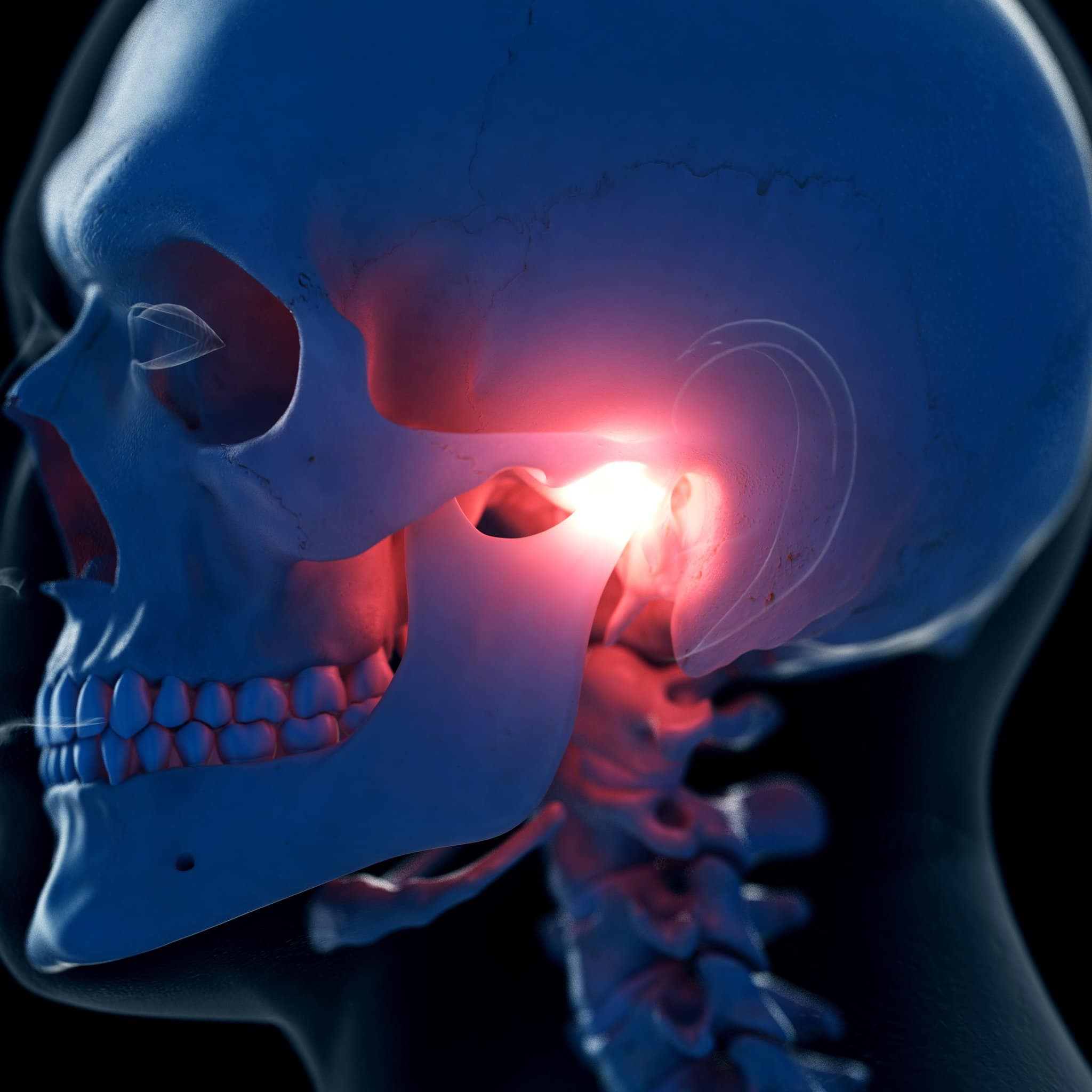
BALANCED JAW JOINTS?
TMD and other malfunctions of the jaw joint are common. More and more people are suffering from vague symptoms such as headaches, problems with circulation and even tinnitus. Because of the diversity of symptoms, the cause of the illness often goes unrecognized. But malfunctions of the jaw can be treated thanks to state-of-the-art diagnostic and therapeutic procedures.
Do you think you have TMD? We can help!
Medical studies have shown that around 8 percent of people suffer from a temporomandibular joint dysfunction (TMD). More than 50 percent have another masticatory system disorder.
With the DIR® system, diagnosis is quick and easy. It registers the movement processes in the jaw and sends the measurements to a computer, where specialist software uses the measurement data to generate a model that is shown right on the screen during the check-up.

SENSITIVE BALANCE
A TMD (sometimes called TMJD, temporomandibular joint dysfunction) arises when teeth on the upper or lower jaw do not fit together properly (malocclusion). All it takes for malocclusion to develop is for the jaw to deviate from its natural position by a few micrometers because of malposition, gaps between the teeth, or poorly fitted dental prostheses.
The sensitive jaw joints register the unnatural position and try to compensate for it. In this process, the strong masticatory muscles have to work harder and harder to counteract the malposition. The increased pressure creates unnatural abrasion of the enamel at the point where the teeth meet – an early warning sign of malocclusion.
WHERE DOES THE PAIN COME FROM?
If the cause is not dealt with, the tension will continue to increase. This affects not only the jaw joint, but also the whole body, as the masticatory musculature is connected with the muscles of the face, neck and back, and even with the spine.
That is why pain can sometimes occur far from the jaw. If this happens, doctors and patients are often at a loss to explain it. Other symptoms of TMD include dizziness, tinnitus or migraines – and for patients, this is often the start of a frustrating journey from specialist to specialist.
DIR®: PRECISION DIAGNOSTICS
We can safely identify and treat this complex group of symptoms with expertise. To do this, we use the computer-controlled DIR® system (Dynamic Intraoral Registration). It enables precise measurement of malocclusions and disruptions to chewing movements. This allows us to evaluate the situation objectively.
The treatment aims to restore a healthy “neutral position” between the upper and lower jaw. That is why we produce a dental splint based on the DIR® measurements. It is worn over a long period of time and is regularly adjusted until the teeth and jaw joint have regained their natural balance. In order to support the process, we work in close cooperation with physiotherapy and ENT practices.
